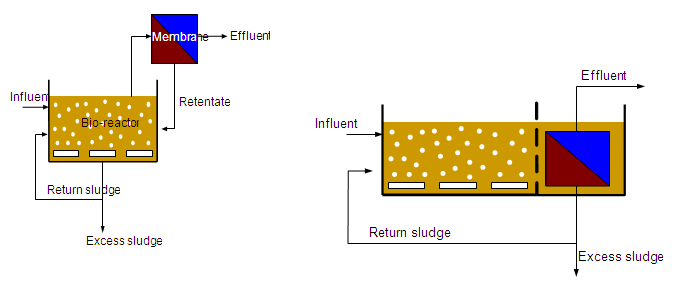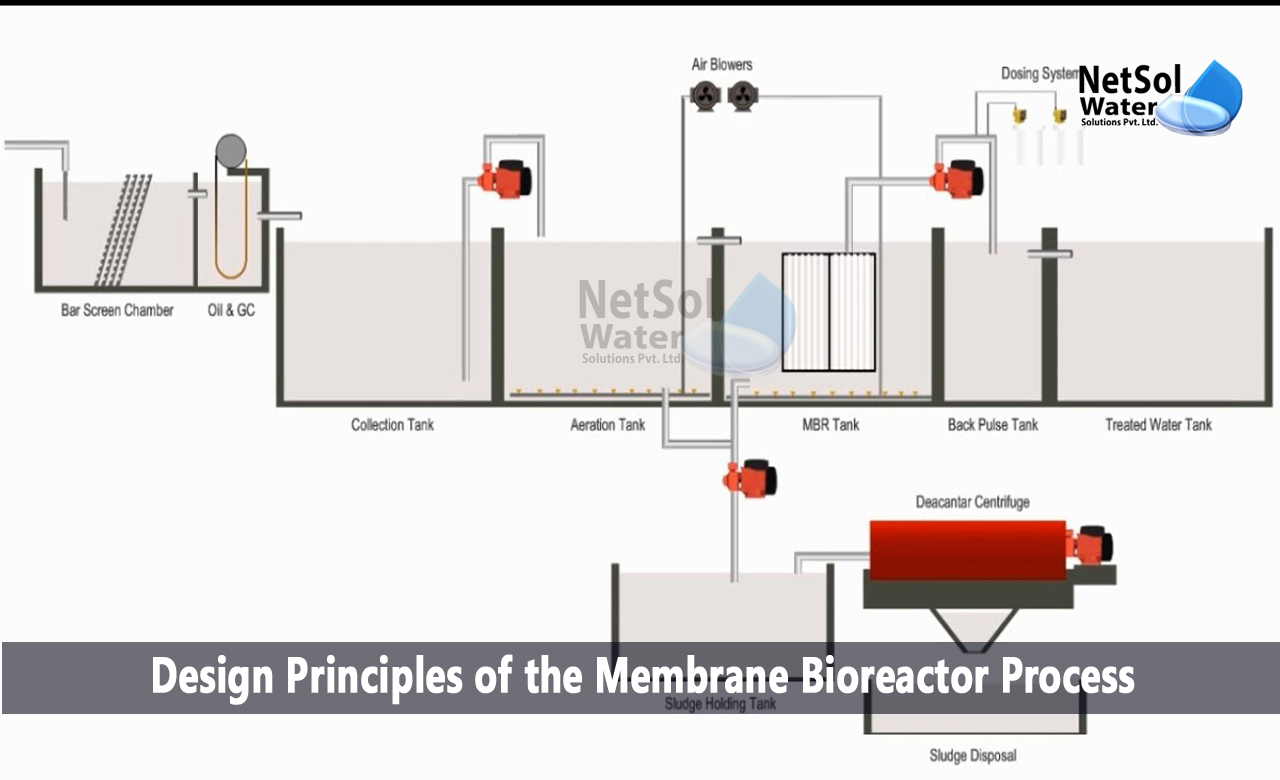Membrane Layer Bioreactors Explained: Effective Solutions for Tidy Water
Membrane bioreactors (MBRs) have arised as an innovative option for resolving the pushing difficulties of wastewater treatment - Membrane Bioreactor. By incorporating organic processes with advanced membrane layer filtering, MBRs not only enhance the quality of cured water however additionally lower the spatial needs of therapy centers.

What Are Membrane Layer Bioreactors?
Membrane bioreactors (MBRs) are advanced wastewater therapy systems that integrate biological destruction procedures with membrane purification innovation. This integration permits the effective elimination of contaminants from water, making MBRs a recommended option in various applications, consisting of community wastewater therapy and industrial effluent monitoring.

One of the crucial benefits of MBRs is their capability to produce top notch effluent, typically suitable for reuse in irrigation or commercial processes. In addition, MBRs require a smaller sized footprint compared to standard treatment systems, making them ideal for city settings where area might be limited.
In addition, MBRs can successfully handle varying influent lots and are less at risk to the effects of poisonous shocks. These qualities add to their growing popularity as a lasting service for addressing the raising need for tidy water while decreasing environmental effects.
Just How Membrane Layer Bioreactors Job
While the procedure of membrane bioreactors (MBRs) may appear facility, it fundamentally focuses on the synergy between biological procedures and membrane layer purification. MBRs integrate a biological treatment process, commonly activated sludge, with a membrane separation system to deal with wastewater effectively.
In an MBR system, wastewater is initial presented right into a bioreactor where microorganisms degrade raw material and other pollutants. The biological activity decreases the concentration of contaminants while promoting the growth of biomass. Following this biological therapy, the combined alcohol undergoes membrane layer filtration, which can be microfiltration or ultrafiltration, depending on the desired effluent high quality.
The membrane layers work as a physical barrier, allowing water and small solutes to pass while keeping suspended solids and larger particles. This makes it possible for the system to keep a high focus of biomass within the reactor, improving the treatment effectiveness.
Additionally, the constant separation of treated water from the biomass helps with a compact style and lessens the footprint of the treatment center. On the whole, the mix of biological destruction and membrane filtration in MBRs results in effective and dependable wastewater therapy, guaranteeing top quality effluent ideal for different applications.
Advantages of MBR Innovation
One of the key benefits of membrane bioreactor (MBR) modern technology is its capability to produce high-grade effluent with a significantly lowered impact compared to traditional wastewater treatment methods. MBR systems properly integrate biological treatment and membrane layer filtering, resulting in remarkable removal of impurities, including put on hold solids, pathogens, and organic issue. This ability brings about effluent that typically fulfills or surpasses rigorous regulatory criteria for reuse and discharge.
Additionally, MBR innovation permits for higher biomass concentrations, which boosts the treatment effectiveness and lowers the required activator quantity. This compact style is specifically advantageous in metropolitan locations where space is limited. The functional versatility of MBR systems additionally indicates they can adapt to differing influent top qualities and circulation prices, making them ideal for a large range of applications.
In addition, the decreased sludge production connected with MBR procedures adds to decrease functional and upkeep expenses. The membranes work as a physical barrier, lessening the danger of obstructing and making it possible for longer operational periods in between cleansing. Overall, the benefits of MBR technology make it an attractive solution for sustainable wastewater therapy, addressing both environmental concerns and the demand for efficient source administration.
Applications of Membrane Layer Bioreactors
With their flexibility and efficiency, membrane layer bioreactors (MBRs) find applications throughout different sectors, consisting of municipal wastewater therapy, commercial procedures, and even water reclamation. In metropolitan setups, MBRs provide a compact option for treating wastewater, efficiently getting rid of contaminants while simultaneously creating top quality effluent that fulfills rigorous regulative requirements. This makes them particularly appropriate for locations with limited room.
In commercial applications, MBR innovation is used for treating process water, particularly in markets such as food and drink, drugs, and petrochemicals. These industries gain from MBRs' ability to manage high natural loads and their performance in recovering valuable sources from wastewater, such as nutrients and water.
Additionally, MBRs play a crucial function in water recovery efforts, allowing the reuse of treated wastewater for irrigation, industrial processes, or perhaps as potable water after additional treatment (Membrane Bioreactor). Their effectiveness in removing contaminants continue reading this and virus makes them a reliable selection for ensuring water top quality in different reuse applications
Future of Water Therapy Solutions
The future of water therapy options is positioned for transformative advancements driven by technological advancement and enhancing environmental awareness. As international water scarcity becomes a pressing concern, brand-new techniques, including membrane layer bioreactor (MBR) systems, are established to play a critical function in improving the effectiveness and sustainability of water More Bonuses therapy processes.
Arising technologies such as man-made knowledge and artificial intelligence are anticipated to optimize therapy operations, permitting real-time monitoring and predictive maintenance. This will certainly enhance the total integrity and performance of water treatment facilities. Additionally, advancements in membrane layer materials, such as graphene and nanofiltration, guarantee to boost permeation prices and reduce fouling, resulting in reduced power consumption and operational costs.
Additionally, the assimilation of renewable resource resources right into water treatment plants will certainly add to greener techniques. The circular economic situation design will likewise acquire traction, motivating the recovery of beneficial resources from wastewater, such as nutrients and power.
Final Thought

Membrane bioreactors (MBRs) have arised as a sophisticated solution for resolving the pushing obstacles of wastewater treatment. By integrating organic procedures with sophisticated membrane filtering, MBRs not just improve the top quality official statement of cured water but likewise decrease the spatial demands of treatment centers.One of the essential benefits of membrane layer bioreactor (MBR) technology is its capability to generate top notch effluent with a considerably decreased footprint contrasted to traditional wastewater treatment approaches.With their adaptability and efficiency, membrane bioreactors (MBRs) discover applications throughout various markets, including local wastewater therapy, commercial procedures, and even water reclamation.In verdict, membrane bioreactors stand for a significant advancement in wastewater therapy modern technology, incorporating organic procedures with reliable membrane filtration to generate top notch effluent.